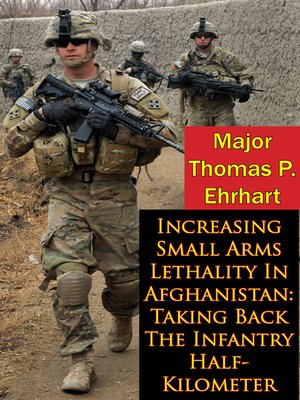Increasing Small Arms Lethality In Afghanistan
ebook ∣ Taking Back The Infantry Half-Kilometer
By Major Thomas P. Ehrhart

Sign up to save your library
With an OverDrive account, you can save your favorite libraries for at-a-glance information about availability. Find out more about OverDrive accounts.
Find this title in Libby, the library reading app by OverDrive.



Search for a digital library with this title
Title found at these libraries:
| Library Name | Distance |
|---|---|
| Loading... |
Operations in Afghanistan frequently require United States ground forces to engage and destroy the enemy at ranges beyond 300 meters. These operations occur in rugged terrain and in situations where traditional supporting fires are limited due to range or risk of collateral damage. With these limitations, the infantry in Afghanistan require a precise, lethal fire capability that exists only in a properly trained and equipped infantryman. While the infantryman is ideally suited for combat in Afghanistan, his current weapons, doctrine, and marksmanship training do not provide a precise, lethal fire capability to 500 meters and are therefore inappropriate. Comments from returning non-commissioned officers and officers reveal that about fifty percent of engagements occur past 300 meters. The enemy tactics are to engage United States forces from high ground with medium and heavy weapons, often including mortars, knowing that we are restricted by our equipment limitations and the inability of our overburdened soldiers to maneuver at elevations exceeding 6000 feet. Current equipment, training, and doctrine are optimized for engagements under 300 meters and on level terrain There are several ways to extend the lethality of the infantry. A more effective 5.56-mm bullet can be designed which provides enhanced terminal performance out to 500 meters. A better option to increase incapacitation is to adopt a larger caliber cartridge, which will function using components of the M16/M4. The 2006 study by the Joint Service Wound Ballistics-Integrated Product Team discovered that the ideal caliber seems to be between 6.5 and 7-mm. This was also the general conclusion of all military ballistics studies since the end of World War I.







